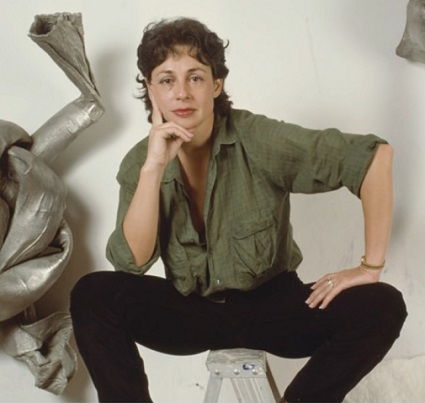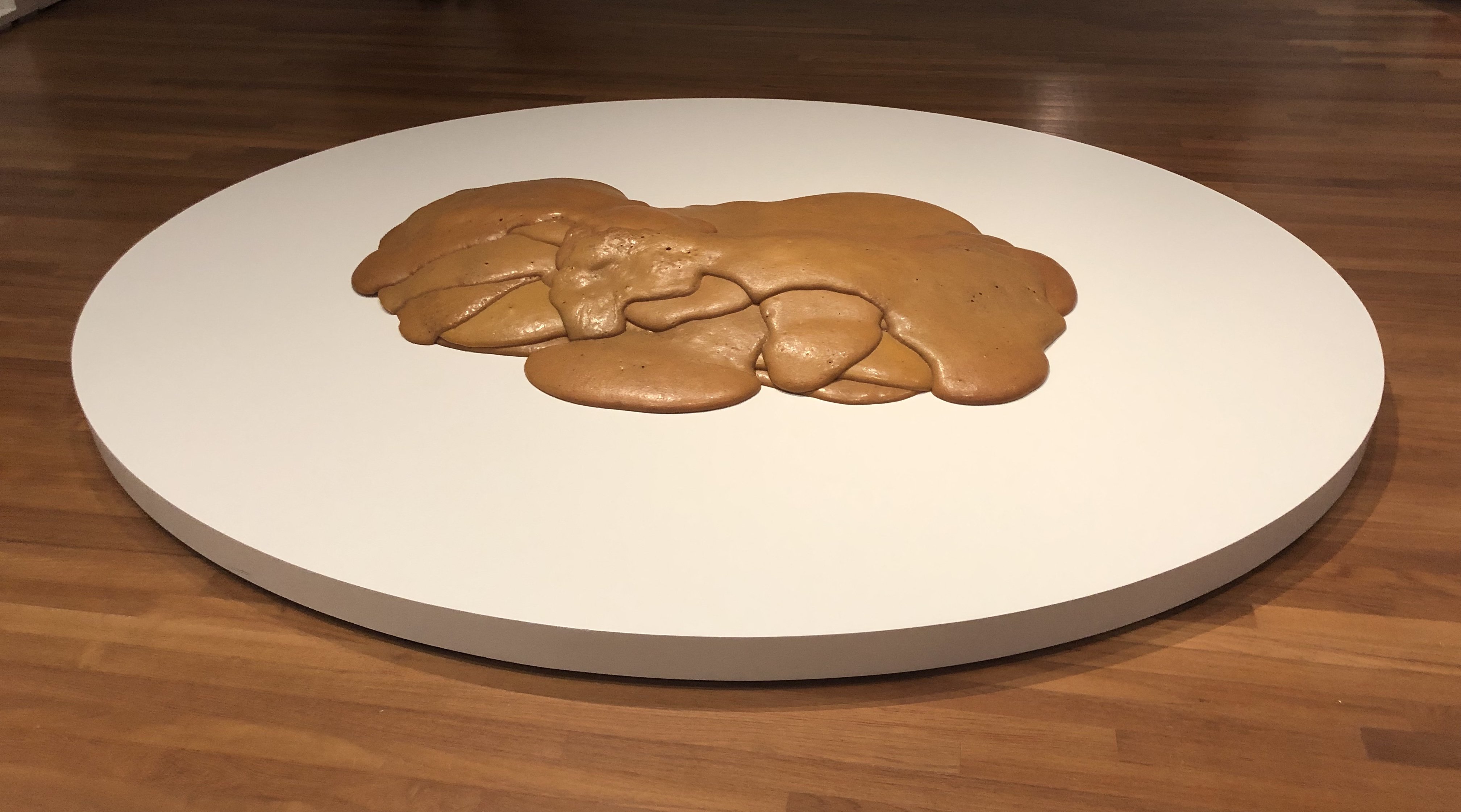
By paring artworks down to their most essential elements, Minimalist artists intended to strip away individual expression and artistic decision-making and create a direct, unmediated encounter between the viewer and the art object in a specific space and time.
Artist :: Lynda Benglis
From the exhibition, I think there were many works that were interesting – for example, I really liked “Cloud Canyons No. 24” by David Medalla, and also “Void” by Anish Kapoor. However, I felt that the meanings behind Lynda Benglis’ works are more relatable towards the essence of “Minimalism”. Maybe because her works lean towards abstract expressionism – focusing on the use of the medium, just like Abstract artist Jackson Pollock. For example, in some of her works, she eliminates the conventional use of any form of canvas and poured paint onto the floor, allowing the walls and corners to shape her work.
“I just wanted to go beyond, and create something that was visually more. I was interested in excess, buoyancy, weight, gesture of material. It was very different from abstract expressionism.”
She simply pours her mediums and allows them to take their own shape. Any conceptual interpretation of the work is left to the viewer as she believes that that viewer is half the work.
“I believe the viewer is half the work. Duchamp said it and I believe it.”
Although her works venture into feminism, I think that her main focus on material (especially something that was new during that time) and “unaltered results” help make her artworks broader and open to greater interpretation, because she was able to find a material that did not have a prior suggestion stuck to it, furthur defining the nature of minimalism.
References:
Lynda Benglis | National Museum of Women in the Arts
